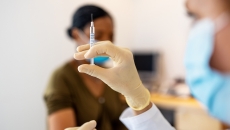Bill Siwicki
Prior to implementation, the medical center was not attesting for the MIPS CMS 2 measure, but after about 10 months had reached an attestation rate of 67%.
The companies say their program is designed to offer patients direct access to virtual care while reducing administrative costs.
COVID-19 pushed the New York behavioral health provider into telehealth. It has since fully embraced the technology, enabling it to provide more services for patients.
They include components for patient education, screening and consent, scheduling, appointment reminders, check-in and vaccination, post-appointment follow-up, and next-dose reminders.
Workforce
The clinically integrated network uses the technology to help primary care physicians, nurse coordinators and care managers close quality gaps.
Providers at the Western Ohio-based health system work with staff at more than 70 schools to keep kids healthy and avoid ER visits using virtual care.
"Ensure your tech stack protects delivery, cold chain, workers, administrators, dispatchers and end users, with transparency into exactly when the vaccines will be delivered," says Onfleet CEO.
The health system has experienced a 15.2% increase in case volume and a 12.4% increase in prime-time utilization, among other wins.
Workforce
It helped eliminate delays for mission-critical applications, improve clinician experience, optimize IT human resources, make disk expansion process 10X faster and reduce time spent managing storage by 75%.
Bee Busy Wellness Center is using a $183,000 FCC grant to add an array of hardware and infrastructure that will take its telemedicine to the next level.










